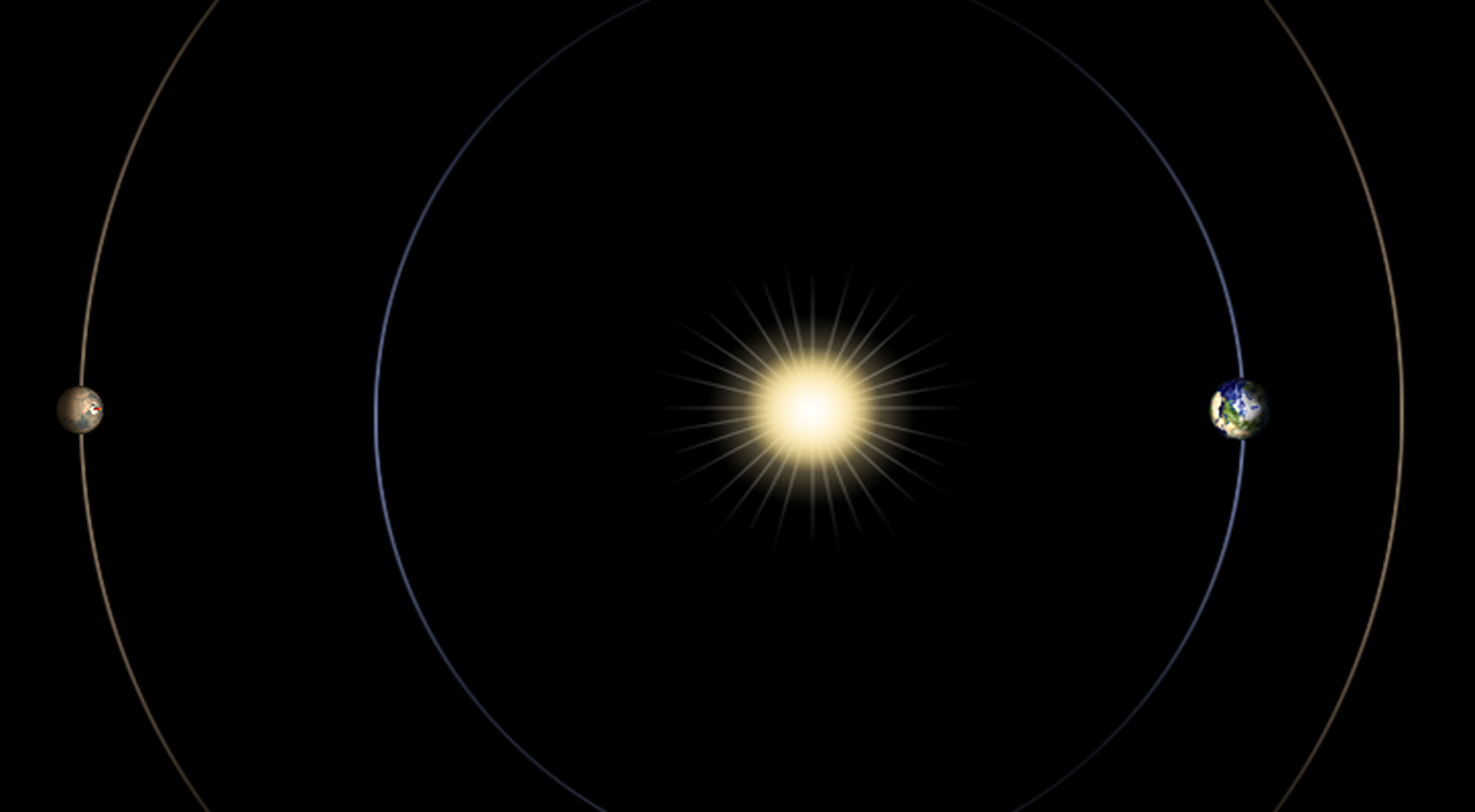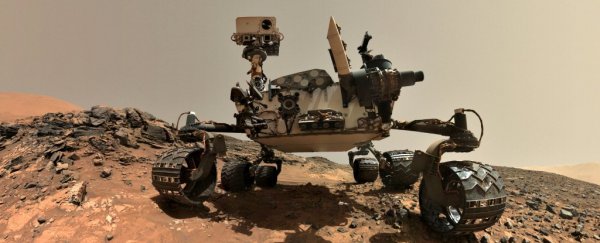Planetary scientists and Mars rovers have a special method for choosing vacation days - they wait for the Sun to get in the way.
From July 22 to August 1, NASA won't be sending communications to any of its Mars gear - two rovers and three orbiters - thanks to the joys of a Mars solar conjunction which takes place every two years or so.
A solar conjunction means that from our perspective here on Earth, the Sun has gone and blocked our view of another planet or Solar System object.
When that happens with Mars, NASA can't send commands to all the gear orbiting the neighbouring Red Planet.
"Out of caution, we won't talk to our Mars assets during that period because we expect significant degradation in the communication link, and we don't want to take a chance that one of our spacecraft would act on a corrupted command," says Chad Edwards, manager of the Mars Relay Network Office at NASA.
Yes, we certainly don't want our expensive Curiosity or Opportunity to accidentally steer into a Martian ditch.
 Diagram of a Mars solar conjunction / NASA/JPL-Caltech
Diagram of a Mars solar conjunction / NASA/JPL-Caltech
Even though this time the Sun won't be blocking our view of Mars in full, the data would still have a rough time getting to the planet next door, because the corona - scorching ionised gasses emitted from the star's surface - is enough to scramble transmissions. (By the way, you will be able to see the corona later this year during the total solar eclipse.)
But it doesn't mean the rovers and orbiters will be twiddling their mechanical thumbs while they wait for the Sun to get out of the way.
Even with radio silence on our end, the craft will be carrying out a set of commands prepared and sent to them before the conjunction.
"Orbiters will be making their science observations and transmitting data," says Hoppy Price, chief engineer of the Mars Program at NASA's Jet Propulsion Laboratory. "The rovers won't be driving, but observations and measurements will continue."
And data is still going to be transmitted back to us so teams can check how all the Mars exploration gear is faring.
"We will continue to receive telemetry, so we will have information every day about the status of the vehicles," says Edwards.
But the ground teams are definitely capitalising on the comms break as well - the Curiosity team ceased operations over the weekend, parking the rover on a slope at the Vera Rubin Ridge, its current exploration target.
Meanwhile the senior rover Opportunity is chilling near the Endeavour Crater.
Given that Mars gets blocked out by the Sun approximately every 26 months, this is far from the first 'conjunction vacay' the craft will be enjoying on the Red Planet - kicking their wheels back, revelling in a blue sunset.
In fact, it's not even the longest break the rovers and orbiters have gotten due to a solar conjunction. Back in 2013, Curiosity looked after itself for nearly a month. Same as with this time around, there was no traversing of the Mars surface unsupervised.
That's certainly wise, considering it can get into trouble even when researchers are closely monitoring it from control centres nearly 400 million kilometres away.
But ultimately, as our favourite sarcastic rover reminds us, it's not just about being able to stand on (or drive around) Mars, it's what we do with that knowledge.
And rocks.
You can check out here and here to see where the Mars rovers are now.
